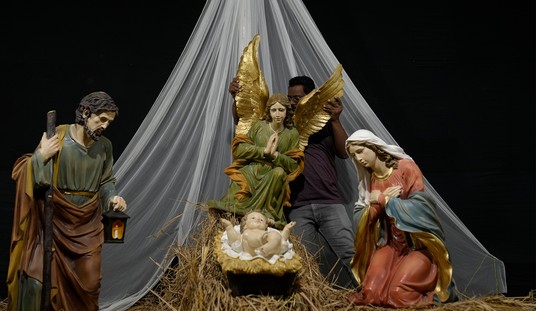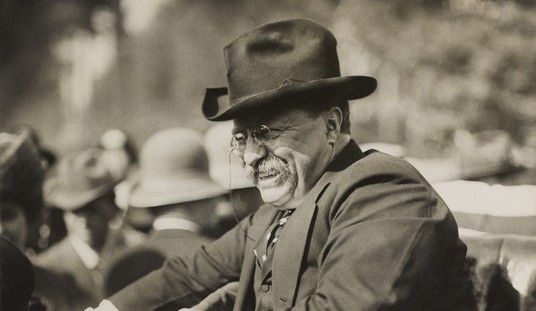
It was an odd week around the RedState Department of History’s World Headquarters. While trying not to get a buzz from the odor of burning Nike products, we were left to reflect on the meaning of sacrifice.
Not the Kaepernick kind, certainly, but rather real sacrifice. Sunday was a sad anniversary but one which bears remembrance.
Jacobus (Jaap) Musch was a Calvinist, who in 1942 formed the Naamloze Vennootschap (NV) resistance group in occupied Holland. The group’s purpose was to help Jewish children find hiding places and refuge from the occupying Nazis.
For over two years, Musch and his family hid Jewish children and somehow found ways to feed and clothe them. But on this date in 1944, Jaap Musch was captured by the Gestapo.
36 hours later, he was dead, after torture. In 1981, Israel’s official memorial to the Holocaust, Yad Vashem, named Musch as “Righteous Among the Nations” for his help to Jewish children.
Instead of a lot of links, I’m going to instead post his full citation from Yad Vashem. It tells a remarkable story, says everything in words far better than I could ever choose — and shows what can happen when people are willing to truly “sacrifice everything”.
Enjoy Sunday and today’s open thread!
Musch, Jacobus Philippus
Jacobus (Jaap) Musch was a dedicated and religious man who came from a family of strictly Calvinist (“Gereformeerd”) in Amsterdam. When the Germans invaded Holland in May 1940, Jaap, who was a lab technician at the Vrije Universiteit in Amsterdam, decided to join the Resistance. However, he had no idea how to go about it. He found the answer in July 1942, when two members of the Braun family received deportation orders. Together with his younger brother, Gerard Musch*, Jaap consulted his vicar, Constant Sikkel, about how to help the Brauns go into hiding. This was the beginning act of the Naamloze Vennootschap (NV*) resistance group dedicated to helping Jewish children find hiding places. The Braun family was taken to homes in Friesland and de Veluwe. From the outset, Jaap was the undisputed leader of the group; he was indeed five years older than most of the other members. When his fiancée forced him to choose between her and the Resistance, it was typical of Jaap that he chose the Resistance, and they broke up. To the question of where the NV should operate, Jaap found an answer in an advertisement for a lab technician at the Staatsmijnen in South Limburg. Jaap applied and was hired, which gave him exemption from forced labor in Germany. In August 1942, armed with an introductory letter from Constant Sikkel, he went to visit Gerard Pontier*, the strictly Calvinist vicar of Heerlen, Limburg. Gerard provided him with a list of reliable members of his congregation and the address of a boarding house owned by the Bockma* family in Heerlerbaan, a hamlet near Heerlen. Over the course of the following few months, solutions were found to the remaining two problems. The waiter Joop Woortman* from Amsterdam, who had won the trust of many residents of the Jewish quarter of the city, was able to arrange the “delivery” of Jewish children and a number of Utrecht and Amsterdam students were recruited to escort the children. In October 1942, the first Jewish children from Amsterdam were accommodated at addresses in and around Heerlen, and from that point on there was a steady flow well into 1944. One of the most important tasks for Jaap and Joop was to procure food, clothing, and footwear for those in hiding. Jaap approached the Heerlen bakers’ cooperative, which promised to provide the major portion of the requirements. It was also Jaap’s job to try and smooth over the inevitable problems that occurred in the homes where the Jewish children were being sheltered. He was called on many times, and in most cases his ardor and persuasive powers saved the day. When things did not work out, he found a new hiding place for the child. By early 1943, Jaap left his job and went into hiding to escape the immediate threat of the Arbeitseinsatz. Pontier arranged false miner’s papers for him under the name of Jaap Vogel. However, despite being in hiding, Jaap refused to tolerate any deviation from the NV’s goal. Through his contact with the foster families, Jaap knew which Jewish children were in need of special attention, and he decided to handle these cases himself. In early 1944, he took several children and moved into a small country house in the woods near Nijverdal, Overijssel. Among the children was 12-year-old Lea Winnik, who up to that point had gone through hell in her hiding places. Jaap decided to take her with him to Nijverdal. Lea describes the eight months she spent in the country house as the happiest period of her time in hiding. In September 1944, during a search for gasoline in the Nijverdal forest, the Dutch commander of the Erica prison camp near Ommen, Overijssel, happened upon the NV country house. The sergeants accompanying him saw four Jewish girls, including Lea Winnik, suspiciously flee into the forest on Jaap’s orders, and when they asked Jaap to identify himself, he said: “Jaap Musch, uh, sorry, Jaap Vogel.” He was taken to the Erica camp, where he was interrogated and brutally tortured. After 36 hours he was executed and was shot dead in the forest near Erica. After the war, he was reinterred with military honors in the Ommen cemetery. All four girls survived the raid.
On September 22, 1981, Yad Vashem recognized Jaap Musch as Righteous Among the Nations.













Join the conversation as a VIP Member